ほど~ない (hodo~nai) Meaning is not as as~ How to use the Noun ほど Verb (ない form) Noun ほど Adjective (ない form) Explain Expressing the idea of using A as a standard for comparison, B is not equal to A Example sentences 1 東京ほど家賃の高いところはない。 toukyou hodo yachin no takai tokoro wa naiMight it be that~ How to use the noun ではないだろうか Explain Used to describe speculation about whether something happened or not Example sentences 1, いろいろと反省したのではないだろうか。 Iroiro to hansei shita node wanaidarou ka Perhaps she repented a lot 2, 今回の試合ではいい一生懸命 (いっしょうけんめい) 頑張 (がんば) ったのに 不合格 (ふごうかく) だった彼女に何と言ったらいいのか、 言い ようがない 。;

Jlpt直前対策 よく似ている文法 21年6月5日 土 限り ないまでも までもない なり なり だの だの からある からなる Youtube
もない grammar
もない grammar-例文 彼と 連絡 (れんらく) を取りたいが、メールドレスも 電話番号 (でんわばんごう) も知らないので 連絡し ようがない 。;人の悪口を 言う もんじゃありません 。;




Learn Jlpt N1 Grammar までもない Made Mo Nai Japanesetest4you Com
食べる・たべる (to eat) → 食べない・たべない (not eat) 出る・でる (to leave/come out) → 出ない・でない (not leave) For other ending verbs, change the last 'u' sound into an 'a' and put ない 書く・かく (to write) → 書かない・かかない (not write)Japanese Grammar – Verbs Plain form to Masu form – Review Notes As we learned in our last Japanese grammar lesson, there are 3 types of Japanese verbs In today's grammar lesson, we learned how to change verbs in each of the 3 verb classes from Plain Present Affirmative form to Plain Present Negative form, also known as naiform In these video review notes we will go overあの店はこの 道 (みち) を 真
If you're not familiar with the word 「 だめ 」( 駄目 ), though it can be used in many different ways it essentially means "no good" The other two key words in this section are 「 いけない 」 and 「ならない」 and they have essentially the same basic meaning as 「 だめ 」も やらない わけにはいかない ね 。 You can't just do nothing 'Have to do' or 'must do' are also how two other expressions 'しなければなりません' and 'しなくてはいけません' might be translated息子の言葉が 信じられ ないことはない が、不安なので息子のクラスメートのお母さんにこっそり
Let's learn Japanese なんかない grammar nankanai JLPT level N3 Formation N/ Vる なんか ない form Meaning and how to use Show nagative meaning, the noun before なんか offen have something bad, unexpected or not wanted For example あの人もう一度会うなんかしたくない。 Ano hito mouichido au nanka shi taku naiStart studying ない grammar Learn vocabulary, terms, and more with flashcards, games, and other study toolsUnless/if you don't do (action), something bad will happen See examples 4~8 Click the image to download the flashcard Download all N3 grammar flashcards Download our complete JLPT N3 Grammar Master Ebook Access ALL extra downloads, ebooks, and study guides by supporting JLPT Sensei on Patreon




N1 Grammar Course Marshall S Site




n3文法 そうにない そうもない 毎日のんびり日本語教師
Learn about は言うまでもない on Kanshudo the fastest and most enjoyable way to learn Japanese grammarThe noun phrase can be a noun or any phrase functioning as a noun (such as a verb with a nominalizer such as の), followed by the topic marker は or subject marker が the key is that the phase following the 必ずしも must end with a negative verb, but that verb may be at the end of a longer phrase which itself might contain another verbAppears to ~ This is used it to describe something or someone (not yourself) who looks~ / seems~ / appears to~ It is similar to そうに・そうな (sou ni / sou na), but げ (ge) is much more restricted with




N2 Grammar Slide Part 1




日本語の文法 例文 ようがない ようもない 日本の言葉と文化
Because bad result This meaning is similar to the grammar たら (tara), but may only be used to express a negative meaning See examples 1~6 Not intend to, not want to do something Always go with conscious verb For example 1 ただ親は見合いに行かせました。 僕は彼女と結婚しようともしない。 Tada oya wa miai ni ikase mashi ta Boku wa kanojo to kekkon shiyo u to mo shi nai That was just because my parents forced me to go to a blinddate (a dating arranged by others)The online grammar checker is perfect for users who need a quick check for their text Try the online editor for checking longer papers and essays, the iOS or Android app for mobile writing, and the browser extension to make sure your writing is clear and mistakefree on any website




Jlpt N3 Grammar てもかまわない How To Say It Doesn T Matter If In Japanese Coto Japanese Academy




Learn Japanese Grammar In Context Jlpt N3 Level そうもない Shadowing Practice Youtube
JLPT N3の文法 ぶんぽう grammar 「~わけではない」 ~ということではない。~という意味ではない。授業中に 居眠りをする ものではない 。;Must~ When speaking, it is often shortened to もんだ (mon da)




Japanese Lesson Jlpt N3 Grammar 18 36 ないことは も ない もの もん ものだから Free Japanese Online Lesson Youtube




Learn Jlpt N3 Grammar そうもない Sou Mo Nai Japanisch Lernen Japan Lernen
のではないだろうか When speaking politely でしょうか should be used rather than だろうか, as can be seen in the next example It is also a useful expression to make suggestions to people that may require a level of sensitivity This is also demonstrated in the next exampleではないだろうか (de wanaidarou ka) Meaning could it be that~; 「~こともない」 is made of 「~ことはない」 (don't ever~~) 「も」 (either) 「~ことはない」 is the negation of 「~ことがある」 (occasionally do~~)




Jlpt直前対策 よく似ている文法 21年6月5日 土 限り ないまでも までもない なり なり だの だの からある からなる Youtube
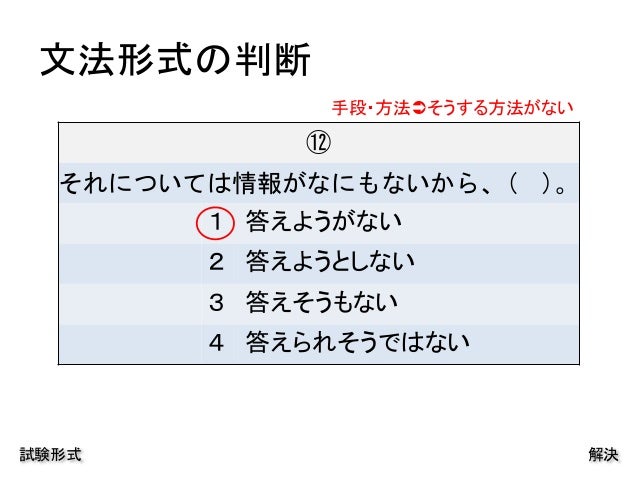



N3 Bunpou
Let's learn Japanese もうない grammar mounai Formation もう+Vない Meaning and how to use Describes the meaning"not do anymore action" For example 彼は私に「君はうそつきだ」と怒鳴った。そのうち、私はもう何も言えなくなった。 Kare ha watashi ni 'kimi ha uso tsuki da' to donattaてたまらない (te tamaranai) comes from the Japanese word 堪る (tamaru), which means to bear or endure something (with emphasis) たまらない is the negative version of that, meaning will not bear / endure, though it can actually mean both that one will not and/or cannot endure somethingJLPT N4 Grammar List Phrase じゃないか 私が君と会うのは久しぶりじゃないか。 Watashi ga kimi to au no wa hisashiburi janai ka It has been a while since I saw you, right?
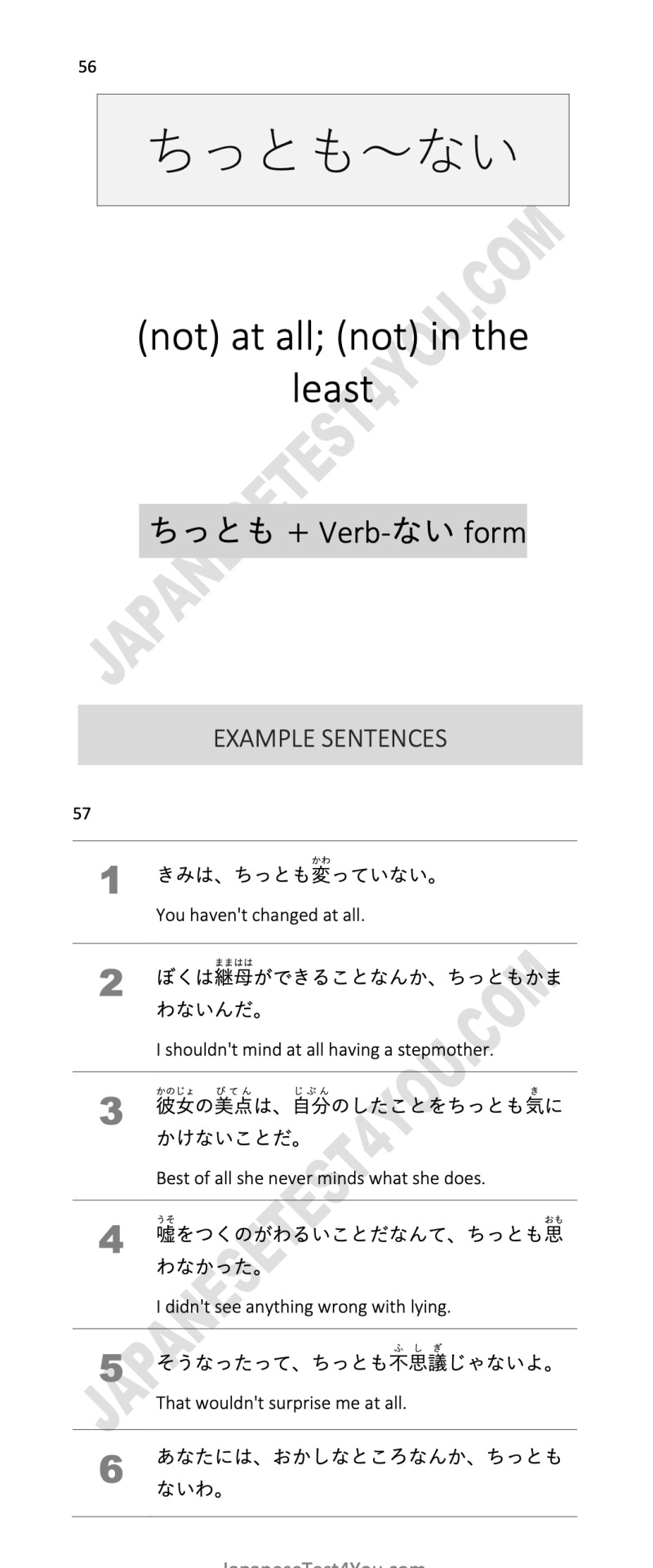



Japanese Tests For You Learn Japanese Grammar Point ちっとも ない This Is An



Japanese Lesson Jlpt N3 Grammar 18 36 ないことは も ない もの もん ものだから Free Japanese Online Lesson Dailymotion Video
よろしく頼む。 英語は理解のためのヒントです。 ① It goes without saying that molester is a crime ② Needless to say, the situation we are in now is extremely severe ③ There is a risk I know that I know without you telling me ④ My mother is having a hard time handling her smartphone, even though she says, "I「はしない」 is a stressed form of a negative form of a verb, or it just makes the sentence stronger 出さない means in your sentence I'll not let you get/go out, while 出しはしない means I'll never let you get/go out Including your 出しはしない, I'll show you some examples as: ないといけない (naito ikenai) Meaning Must, have to Explain The verb in the form of 「な い」 and 「と い け な い」 Example sentences 1 英語でレポートを書かないといけない。 Eigo de repōto o kaka naito ikenai I have to write a report in English 2 今日は客が来るので、部屋を片付けないといけない。




Sou Mo Nai そうもない Jlpt N3 Grammar Meaning 文法 例文 Learn Japanese Flashcards Jlpt Sensei




までもない 日本語能力試験 Jlpt N1 絵でわかる日本語
JLPT N3の文法 ぶんぽう grammar 「~わけにはいかない」:不可能(ふかのう)、できるけどよくない、許されない(ゆるされ 译文:虽说是采访,但一个女人去战场,只能说是危险(没有别的解释)。 「~としか~ない」属于一级句型,介绍如下: ~としか~ない 用否定其它的可能,惟独只强调这一点,与「言えない」(不能说)、「思えない」(不能认为)等表示可能的否定句Noun (very limited) Learn Japanese grammar 気 げ (ge) / げに (ge ni) / げな (ge na) Meaning looks like;




Jlpt直前対策 よく似ている文法 21年6月5日 土 限り ないまでも までもない なり なり だの だの からある からなる Youtube




Learn Japanese Grammar なにも ない Nani Mo Nai Learn Japanese Japanese Language Japanese Grammar
Learn Japanese grammar ては / では (tewa / dewa) Meaning whenever;もんだ ものじゃない Verb (ない form) なadjective いadjective Learn Japanese grammar ものだ (mono da) Meaning normally; Hung Lee Japanese grammar n5, JLPT N5 Today, we will introduce to you Japanese grammar n5 13 ~なかなか~ない not easy to, struggling to, not able to This article will give you the usage, meaning, structure of grammar, besides the




Japanese Tests For You Learn Japanese Grammar Point べくもない This Is An
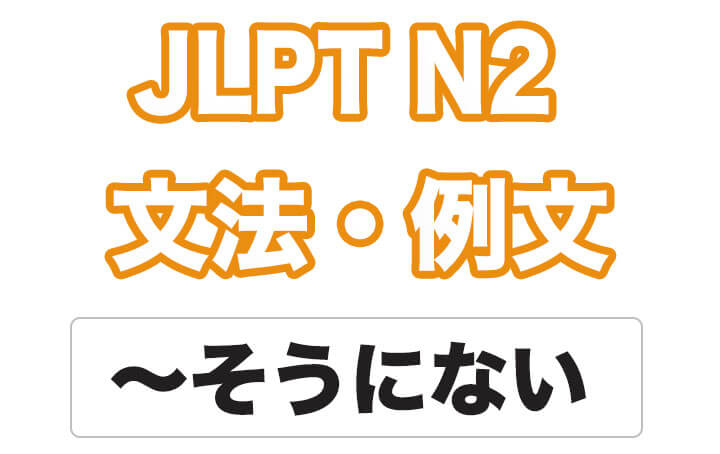



Jlpt N2 文法 例文 そうにない そうもない 日本語net
Japanese ていない grammar teinai JLPT level N5 Formation Vて いない Meaning and how to use Something is not done, relized For example 1` 宿題をまだしていない。 Shukudai o mada shi te i nai I haven't done my homework yetRepetitive action Meaning 1 – if;しかない (shika nai) Meaning Have no choice but to How to use the Verbdictionary form しかない Explain Often used to indicate the intention to do so, there is no other way, nor any other possibility Example sentences 1, ここまで来ればもう頑張ってやるしかほかに方法はありませんね。 Koko made kureba mō ganbatte yaru shika hoka ni hōhō wa arimasen ne




Nani Mo Nai 何も ない なにも ない Jlpt N2 Grammar Meaning 文法 例文 Learn Japanese Flashcards Jlpt Sensei




N3 日本語専門家 Japanese Expert
Today I finished Lesson 2 of An Integrated Approach to Intermediate Japanese While i was working through the grammar section, i burst out laughing all of a sudden, when i read the English explanation, of the grammar point なかなか~ない This is a great opportunity for me not only to teach you some grammar, but also~しなくていい。~する必要はない。 接続 dictionary formことはない。 dictionary formことはないです。 dictionary formことはありません。 注意 一般的なことや他の人にアドバイスをするときに使われる。自分のことにはあまり使わないもうすぐ 発車 (はっしゃ) 時刻だが、走れば 間に合わ ないことはない から、走ろう。;




なくはない Naku Wa Nai Japanese Quizzes
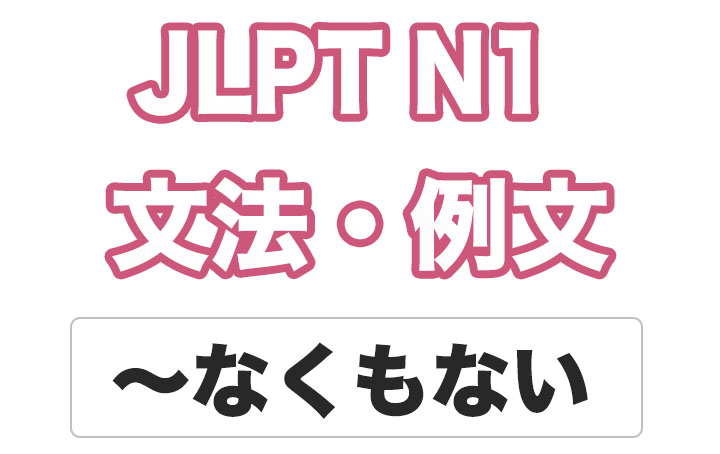



Missing Grammar List Bunpro Bunpro Community
Basically ~ていない focuses more on how things have been up until now rather than how things are now, but in this case the difference is not very important Of course it works 限られない is the plain passive form of 限る, "is not limited" JLPT N3の文法 ぶんぽう grammar 「~はずがない」 ~する可能性がない。~わけがない。例文 このサイズでも 読め ないことはない が、できれば縮小印刷をしないで欲しいというのが本音です。;



Jlpt N2 Grammar 少しも ない Sukoshi Mo Nai Explanation And Examples




N1 N2 Japanese Grammar までもない ないことはない 一方で Youtube
相違ない 毎日勉強してきたのだから、今度こそn1に合格するに相違ない。 この状況でオリンピックを開催するのは難しいに相違ない。 有名企業の社長なら、いつも多忙であるに相違ない。 多くの人が同じ証言をしているので、あの話は真実に相違ない Japanese Grammar Exercise Negative Verbs 「ない」 Before starting the exercise for negative verbs 「ない」, please clarify any doubts you may have about the grammatical rules by referring to your grammar guidebook or dictionary The Instantaneous Composition Method requires you to compose sentences with the target sentence例文② Xをすべきではない。 夜遅くに 騒ぐ もんじゃない 。 近所迷惑だ。 口に物を入れたまま しゃべる ものではありません。 行儀 (ぎょうぎ) が悪いです。;




ないまでも 日本語能力試験 Jlpt N1 絵でわかる日本語




Jlpt N1 試験対策 文法 21年6月12日 土 Youtube
Japanese ない限り grammar naikagiri JLPT level N2 Formation Vない+かぎり Meaning and how to use Expresses the meaning "for a long while, if said event doesn't happen then a thing/status wouldn't happen" Means that if the former clause does happen then the former clause might change as wellUsing 〜ずにはいられない (zu ni wa irarenai) When you can't help but do something , you can add to the end of a verb, 〜ずにはいられない (〜zu ni wa irarenai) This phrase isn't that common in everyday conversations, but it's covered in the JLPT N3 ずにはいられない8 No, you probably didn't mishear This is a pretty common construction in colloquial Japanese, though it is not grammatically correct It might help to think of the じゃない as a tag that turns the sentence into a tag question, with a tone of surprise or disbelief Share




Learn Jlpt N1 Grammar そうにもない Sou Nimo Nai Japanesetest4you Com




べくもない 日本語能力試験 Jlpt N1 絵でわかる日本語
One simple rule that can help you remember which form to use is ないで is the negative て form, なくて is the て form of the negative, and ずに can be used instead of ないで when the meaning is 'without doing' Use with adjectives For い or な adjectives, or a noun ではない, the only form that can be used is なくてあなたは疲れているんじゃないか。 Anata wa tsukarete iru n janai ka You are tired, aren't you? 1 Answer1 Yes, this is a typical example of explanatoryの Looking at the source, we can see this sentence is trying to explain why the アザラシ was found in the mountain 川に入ってしまいました。 The animal ended up entering the river 川に入ってしまったのです。 It is that the animal ended up entering the




Jlpt N1 Grammar までもない Made Mo Nai




Jlpt N1の文法 Grammar までもない Mlc Japanese Language School In Tokyo
JLPT N3 Grammar 〜ないと As you would expect, you've already learnt enough in JLPT N4 to communicate basic ideas – JLPT N3 allows you to do so with more nuances of expression and most importantly, to do so faster Let's review how we say " I must do 〜 " in JLPT N4 using the 〜なければなら




倒置して強調する 英語文法 英語ニュースを読もう




Learn Japanese Grammar Jlpt N2 Flashcard Learn Japanese Words Japanese Language Learning Japanese Words




0sius4225e Xam
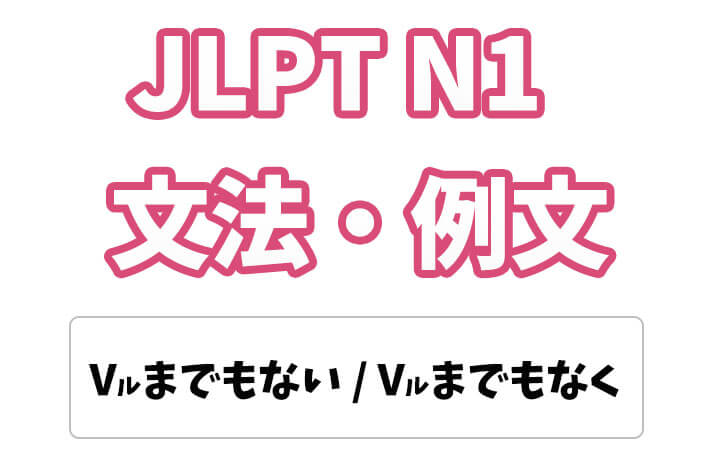



Jlpt N1 文法 例文 までもない までもなく 日本語net




そうもない Sou Mo Nai Jlpt N3 Grammar List




Learn Japanese Grammar In Context Jlpt N3 Level そうもない Shadowing Practice Youtube




N1 Grammar Explore Tumblr Posts And Blogs Tumgir




ようにも ない 日本語能力試験 Jlpt N1 絵でわかる日本語




としても To Shite Mo Japanese Quizzes




Learn Jlpt N1 Grammar ないまでも Nai Made Mo Japanesetest4you Com




なにも ない Nani Mo Nai Japanese Quizzes




N1 N2 Japanese Grammar までもない ないことはない 一方で Youtube




わけではない Grammar And Use Pdf




Jlpt N3文法 ようがない ようもない Youtube




Jlpt N1 文法 Grammar までもない Japanese Language Jlpt N1 Grammar 文法 文法 日本語の文法 日本語




Japanese なん も ない Grammar Nan Mo Nai Learn Japanese Online




Jlpt N2 Grammar 何も ない Nani Mo Nai Meaning Jlptsensei Com




Jlpt N2 Grammar ちっとも ない Chitto Mo Nai Meaning Jlptsensei Com




Jlpt N2 Grammar なくはない なくもない Naku Wa Nai Naku Mo Nai Meaning Jlptsensei Com




Jlpt N5 Grammar なくてもいい Naku Temo Ii Meaning Jlptsensei Com




Learn Jlpt N1 Grammar よ うにも ない You Nimo Nai Japanesetest4you Com




Drill And Drill Jlpt N1 Grammar Omg Japan




Learn Jlpt N1 Grammar ないものか Nai Mono Ka Japanesetest4you Com




Pin On Japanese Language




Jlpt N1 Grammar と言えなくもない To Ienaku Mo Nai Meaning Jlptsensei Com




Learn Jlpt N1 Grammar べくもない Beku Mo Nai Japanesetest4you Com




少しも ない Sukoshi Mo Nai Japanese Quizzes




ことはない Koto Wa Nai Jlpt N3 Grammar List




アニメで学ぶ Jlpt N1 文法 Day までもない Youtube




Jlpt N2 Grammar 少しも ない Sukoshi Mo Nai Meaning Jlptsensei Com
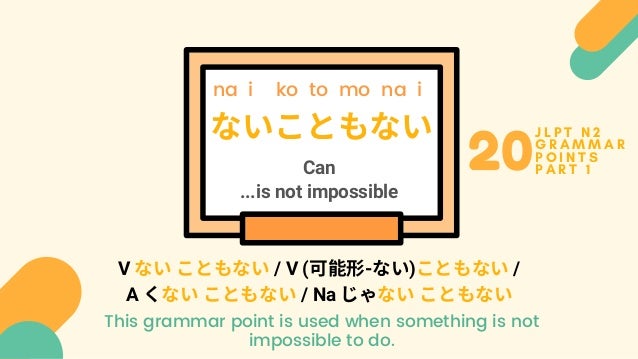



N2 Grammar Slide Part 1




Jlpt N3 Grammar そうもない そうにない Sou Mo Nai Sou Ni Nai Meaning Jlptsensei Com




Nihongo Power Drill N3 Grammar Omg Japan




Learn Jlpt N2 Grammar 少しも ない Sukoshi Mo Nai Japanesetest4you Com




Learn Jlpt N3 Grammar わけがない Wake Ga Nai Japanesetest4you Com
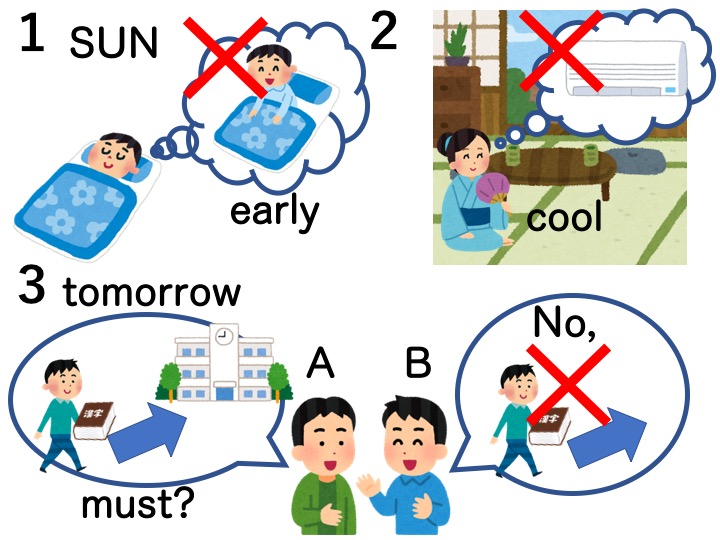



Lesson 81 なくてもいいです Don T Have To Japanese Language Note




Learn Jlpt N1 Grammar までもない Made Mo Nai Japanesetest4you Com




Jlpt文法解説 ないものでもない ないでもない なくもない なくはない N1 日本語教師のn1et




Must Know Grammar Points For The Jlpt N2 Coto Japanese Academy




Learn Jlpt N3 Grammar そうもない Sou Mo Nai Japanesetest4you Com
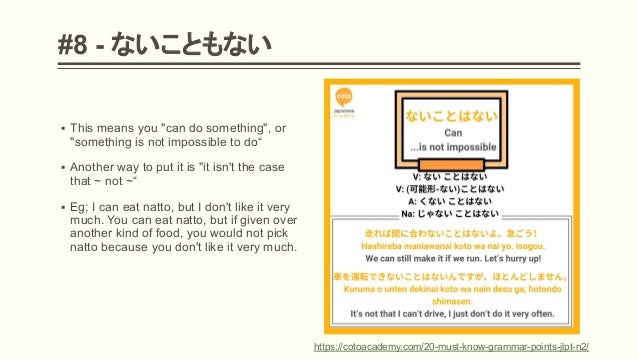



Grammar Points For Jlpt N2




Pin On Japanese




n2文法 ても ても ない 毎日のんびり日本語教師




Jlpt N1 文法 Grammar を限りに Quiz Japanese Language Mlc Facebook




Nihongo So Matome Jlpt N1 Grammar Omg Japan




Jlpt N2 Grammar ちっとも ない Chitto Mo Nai Meaning Jlptsensei Com




のも無理はない のも無理もない 日本語能力試験 Jlpt N1文法 絵でわかる日本語




The Preparatory Course For The Japanese Language Proficiency Test N1 G



Jlpt N1 Grammar べくもない Beku Mo Nai Explanation And Examples
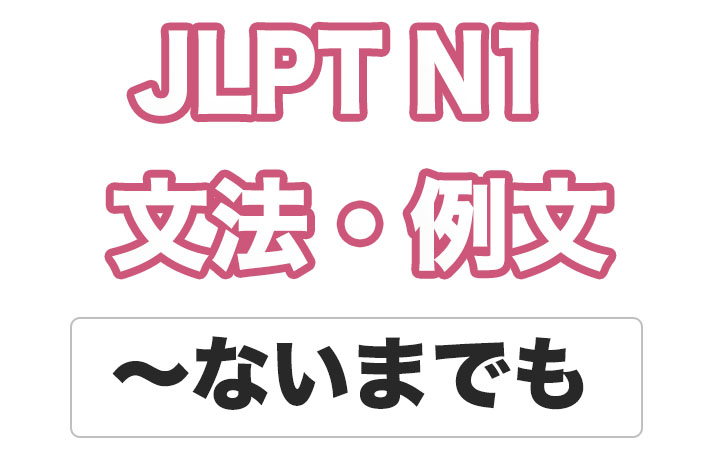



Jlpt N1 文法 例文 ないまでも 日本語net




Jlpt N1 Grammar うにも ない Even Want To Yasu Juku




ないこともない 日本語能力試験 Jlpt N2 絵でわかる日本語




Japanese Tests For You Japanese Grammar さえ ば Sae Ba




What Is The Meaning Of よ うにも ない ここの に と も の使い方を教えてください Question About Japanese Hinative




Jlpt N2 Grammar なくはない なくもない Naku Wa Nai Naku Mo Nai Meaning Jlptsensei Com




Jlpt N1 Grammar でも何でもない くも何ともない Demo Nan Demo Nai Kumo Nan Tomo Nai Meaning Jlptsensei Com




Important Grammar Jlpt N4 Jft Preparation Facebook




Learn Jlpt N2 Grammar ちっとも ない Chitto Mo Nai Japanesetest4you Com




ようがない ようもない 日本語能力試験 Jlpt N3 絵でわかる日本語




ることもある ないこともある Jlpt Grammar N3




Japanese Tests For You Japanese Grammar ないほうがいい Nai Hou Ga Ii




までもない Made Mo Nai Meaning Jlpt N1 Grammar Jlpt Matome




Jlpt N1 Grammar でも何でもない くも何ともない Demo Nan Demo Nai Kumo Nan Tomo Nai Meaning Jlptsensei Com




N1 N2 Japanese Grammar までもない ないことはない 一方で Youtube




Jlpt N3 Grammar List Share This Learn With Kayes 日本語 Facebook




Jlpt N5 Grammar なくてもいい Naku Temo Ii Meaning Jlptsensei Com
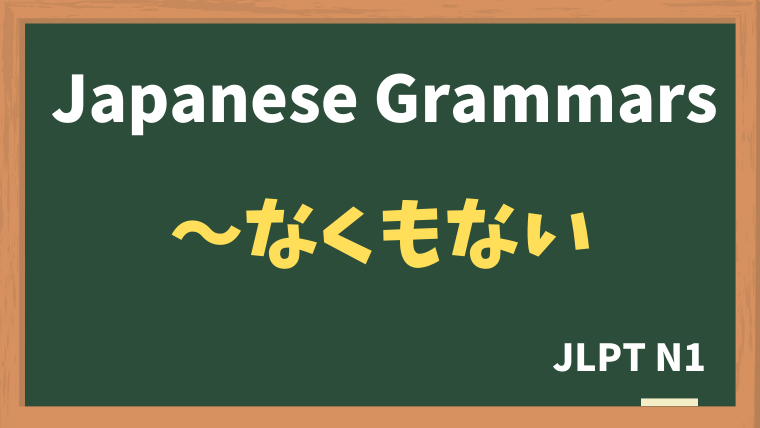



Jlpt N1 Grammar なくもない Nihongo Net




日本語の文法 例文 までもない 日本の言葉と文化




Japanese N3 N3 第1課 文法 Vます そうもない そうにない そうにもない Youtube




ようがない ようもない You Ga Nai You Mo Nai Japanese Quizzes



0 件のコメント:
コメントを投稿